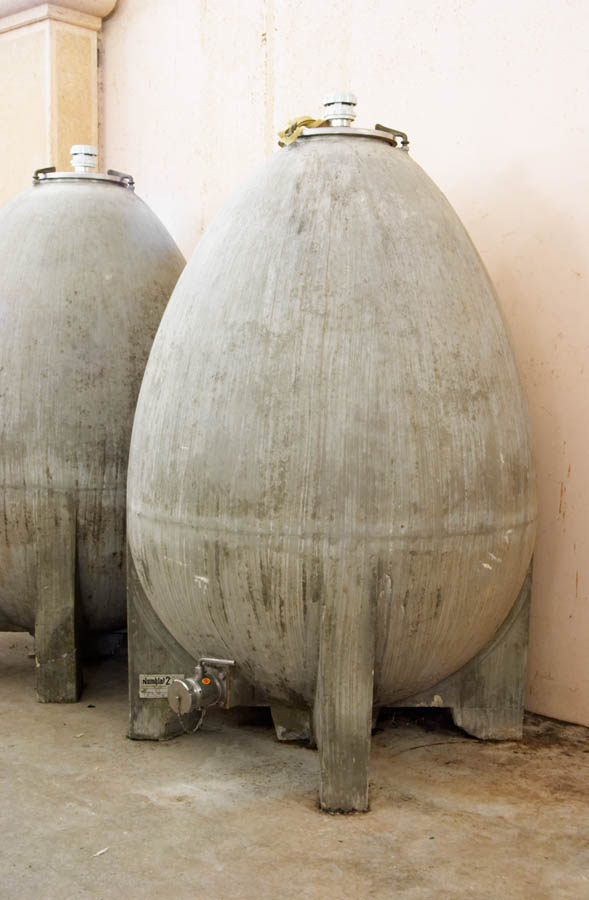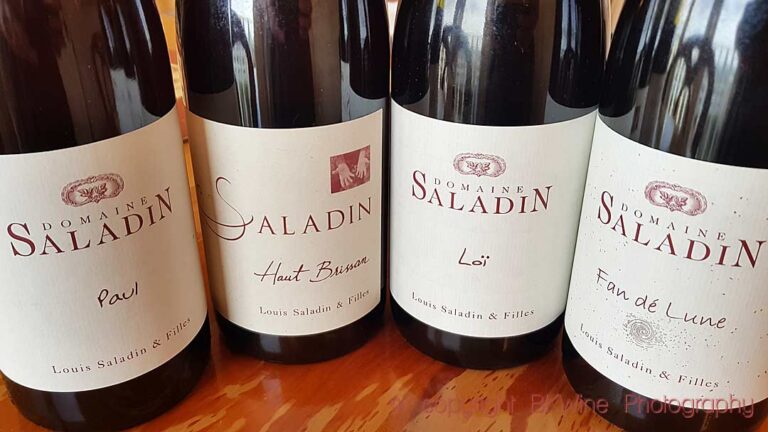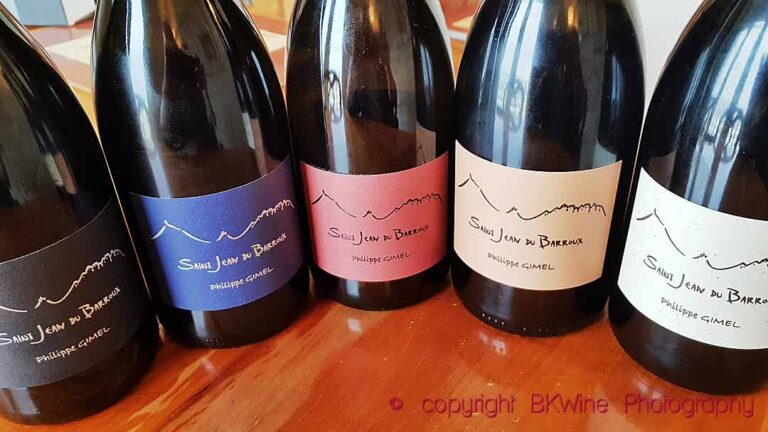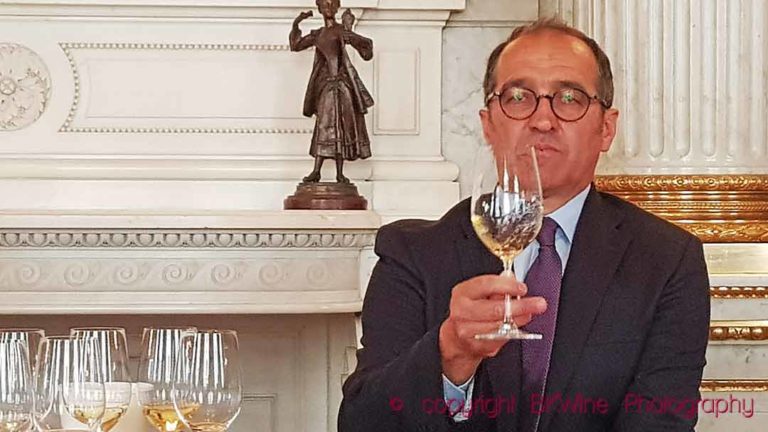An extensive tasting of Domaine Jaboulet wines from the northern Rhone valley.
Domaine Paul Jaboulet Ainé is one of the great tradition-filled wine producers in the northern Rhone Valley. After a change of ownership a few years ago, there is also a lot of new thinking and new dynamics at this famous wine producer. Jaboulet’s export manager was recently in Stockholm and presented a series of wines including Hermitage, Côte Rôtie, Crozes-Hermitage and Cornas, plus some other wines. BKWine’s Carl-Erik Kanne reports.
In recent years, the Rhône region of France has attracted increasing interest, and there are several reasons for that.
One, and perhaps most important, is the generation change that is taking place in French wine production and by that I mean that many young winemakers and wine enthusiasts who today turns up as the owners of the wineries want to do something new, whether they come in as heirs to a wine estate or have changed career to do something else.
Often they return to “the old ways of doing” from before the time of pesticides and think it is “back to basics” that apply at all stages of wine production. Quality in the vineyard and in the wineries provides the best conditions for quality in the end product and consumers gladly pay for quality today.
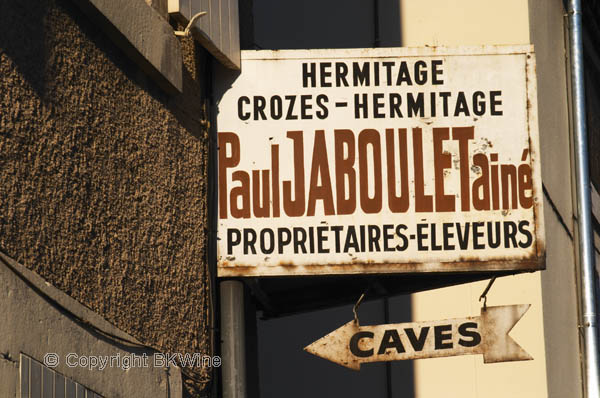
The wines produced are often characterized by being more available soon after bottling than they were before, although the better wines are still gaining in complexity after several years of ageing.
More focus on quality wines
An increasing demand for quality wines and increasing competition from the New World in association with new communication technologies have made it increasingly difficult to make and sell large volumes of simple bulk wines that not long ago were produced in the south of France, mainly in the Languedoc but also in the southern Rhone Valley.
Not so many years ago, it was primarily the Northern Rhone that was on the wine map with their often tough syrah wines, although Châteauneuf-du-Pape in the southern Rhône Valley also was an icon among top wines, but in a different style than the wines from northern Rhone.
The range of wines from the southern Rhone has increased noticeably in recent years. Strongly contributing is perhaps the letter combination GSM, which stands for grenache-syrah-mourvèdre. It is a grape combination that gives wines often with a touch of sweet fruit, flavourful wines with different degrees of structure depending on the syrah-mourvèdre balance. In parallel with the increasing number of good wines with Cote du Rhone designation several village names outside C9dP have become worth looking out for; wines such as Gigondas and Vacqueyras.
Domaine Paul Jaboulet Aîné
Domaine Paul Jaboulet Aîné is one of the oldest wine producers in the Rhône Valley, founded in 1834 in Tain-l’Hermitage and traditionally focused on the production of Hermitage and Crozes-Hermitage wines. Over time, they have expanded their interests through acquisitions in other regions of the Rhone, most recently with the purchase of 11 ha in Châteauneuf (Domaine du Thalabert, see below). In total they own today about 115 ha.
One important change was the arrival of new owners. They change the way they work in the wine cellar, where they for example want to move away from the use of too much oak, to let the pure fruit be more present in simpler wines. They use larger barrels for the more concentrated wines to obtain a better balance in the final product.
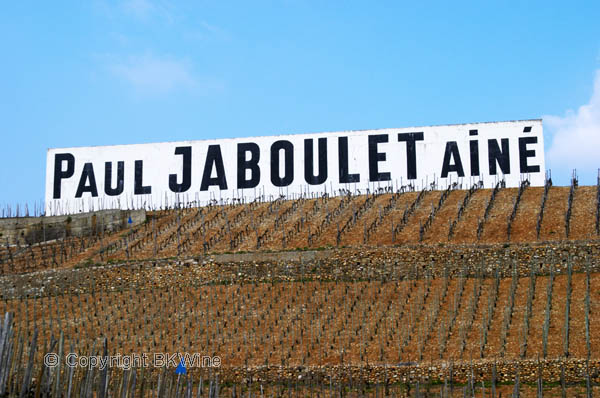
The new owner is the Swiss Frey family, who is also the owner of Chateau La Lagune in Bordeaux. Winemaker and responsible for the renewal of the company is Caroline Frey.
Nigab, Jaboulet’s representative in Sweden, had invited the press to introduce this “new” Domaine Jaboulet using 3 white and 16 red wines. Domaine Jaboulet’s export manager Bertrand Michat was also there.
Jaboulet has divided its wines in four categories from entry level (category 1) with white and red AOC Cotes du Rhone to the “icon wines” (category 4) of Hermitage, both white and red. The two groups between is “regional wines” (category 2) and “domaine wines” (category 3). The tasting followed this categorisation. All quality levels were represented among the 16 wines were.
Here is the full list. The wines were served in 5 series for best comparability:
| År | Kategori | Artikelnr | Lev. (*) | Pris SEK | |
|---|---|---|---|---|---|
| Serie 1 | |||||
| Parallèle 45 Blanc Côte du Rhône | 2013 | 1 | 70005 | Best-s | 89 |
| Crozes Hermitage Blanc Les Jalets | 2012 | 2 | 70040 | Best-s | 151 |
| Hermitage Cheval Stérimberg | 2011 | 4 | 99379 | SB | 395 |
| Serie 2 | |||||
| Parallèle 45 Côte du Rhône | 2011 | 1 | 22800 | SB | 99 |
| Crozes Hermitage Les Jalets | 2010 | 2 | 70292 | Best-s | 151 |
| Serie 3 | |||||
| Gigondas Pierre Aiguille | 2009 | 2 | 70044 | Best-s | 169 |
| Châteauneuf du Pape Les Cèdres | 2008 | 2 | 70616 | Best-s | 259 |
| Cornas Les Grandes Terrasses | 2009 | 2 | 72149 | Best-s | 249 |
| Côte Rôtie Les Jumelles | 2009 | 2 | 70681 | Best-s | 449 |
| Serie 4 | |||||
| Crozes Hermitage Domaine de Thalabert | 1990 | 3 | - | - | |
| Crozes Hermitage Domaine de Thalabert | 2007 | 3 | 70808 | Best-s | 259 |
| Crozes Hermitage Domaine de Thalabert | 2010 | 3 | - | - | |
| Crozes Hermitage Domaine de Thalabert | 2011 | 3 | 90364 | SB | 199 |
| Serie 5 | |||||
| Hermitage La Petit Chapelle | 2010 | 4 | 95464 | SB | 497 |
| Hermitage La Chapelle | 1994 | 4 | - | - | |
| Hermitage La Chapelle | 2011 | 4 | 99199 | utgått | 1299 |
References are for the article numbers in Sweden. Prices are in SEK. 1 SEK ~ 0.11 euro. Most wines are only available through the wine importer’s “on order” range (“Best-s”) available through the Systembolaget shops, but are not in the monopoly’s own range.
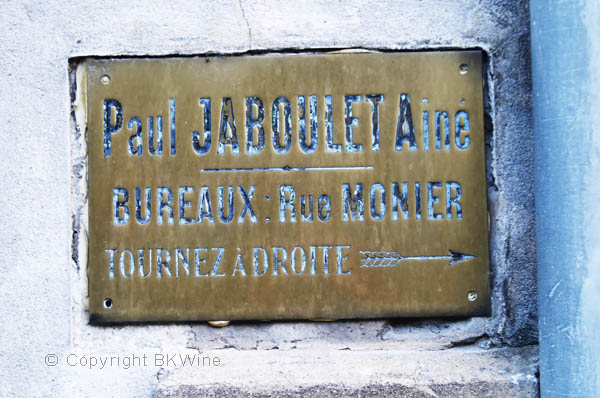
A symphony in wine in five movements
Flight 1, white Rhone Wines
White rhone wines is something I would love to see more of at Systembolaget. The flight began with a Côtes du Rhône, Parallèle 45 Côtes du Rhône Blanc 2013, which has as the main grape grenache blanc along with Viognier, Marsanne, and Bourboulenc; an aromatic food wine with some acidity that can go well with chicken or fat fish.
The white Crozes Hermitage wine, Crozes Hermitage Blanc ‘Les Jalets ” 2012, was made from almost 100% Marsanne and had a relatively high acidity, pure fruit and hints of honey. The wine had some barrel ageing, but above all they had tried a new form of vinification in what they calls “dinosaur eggs” consisting of 1600-litre concrete tanks that are ovoid. With this you get a natural “batonnage”, ie solid particles are stirred, all to give more flavour to the wine.
20% of the wine is made in this way, 20% is vinified in large 600-liter oak barrels, and the rest have had to make do with steel tank.
The white Hermitage wine, Hermitage “Cheval Stérimberg” 2011: 1/3 vinified in dinosaur eggs, 1/3 in 600-litre oak barrels and 1/3 in 225-litre barriques. In total the wine has had 6-7 months of ageing before finally spending one month in steel tanks before bottling. The vines are 35 years old giving wines with a high concentration, so a certain oak ageing allows the wine to become better balanced. The grapes are 65% Marsanne and 35% Roussanne, giving an elegant wine with aromas of orange, honey, butter, and a mellow flavour with acidity, pure fruit, and delicate barrel notes. A beautiful food wine to go with, for example, chicken with cream sauce or tasty fish dishes.
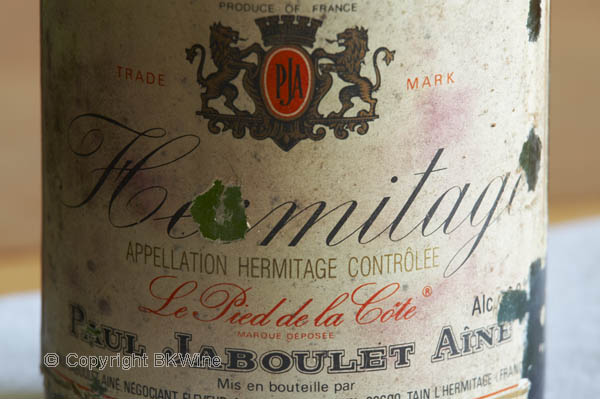
Flight 2, north and south, red
The second series offered one wine from the north and one from the southern Rhône. The character of the wines reflect well the differences in style between areas.
Parallèle 45 Côte du Rhône 2011 from the south, 60% grenache and 40 % syrah which gives a certain sweetish fruit held back by syrah that gives freshness. Ageing in large oak barrels for 6-8 months.
“Les Jalets” 2010 Crozes Hermitage is made from 100% syrah and partly aged on its lees and have had some contact with oak.
The wine had peppery syrah style and initially a certain “animal” (using a French expression) character that eventually subsided. Good clean fruitiness and balanced tannins. A Crozes Hermitage which is enjoyable now, goes well with a lamb stew.
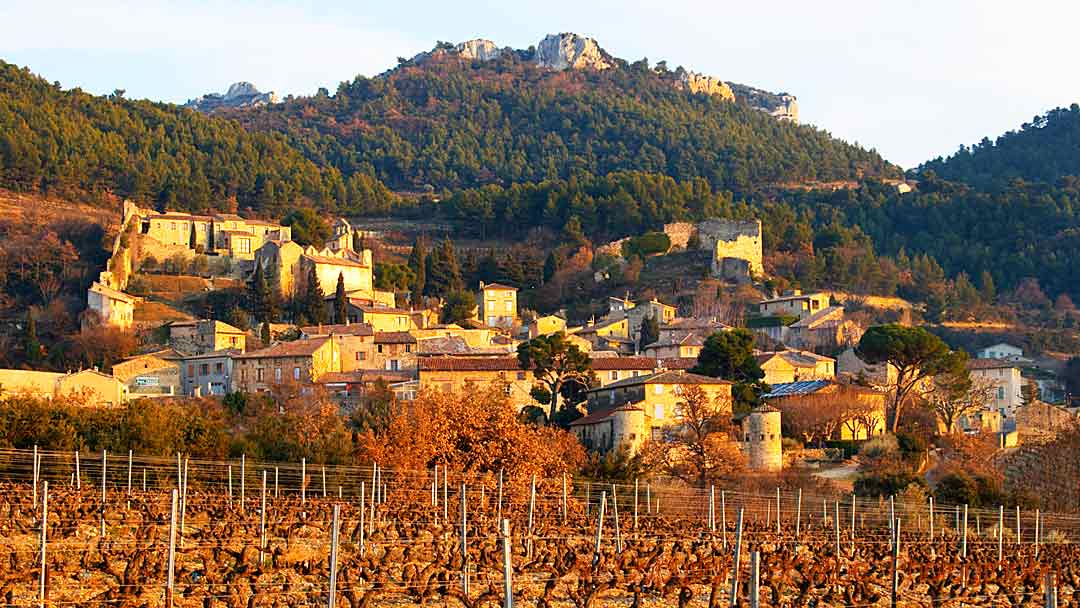
Flight 3: regional wines
The regional wines in flight #3 began with a Gigondas wine from 2009, Gigondas “Pierre Aiguille” 2009, and this was no mistaking through its warm fruit, further highlighted by 80% Grenache, balanced by 10% syrah and as much Mourvèdre.
Good fruit that had freshness and did not feel “cooked” despite the hot weather that year, perhaps because the grapes come from vineyards at altitude. Restrained tannins from large oak barrels gives good structure. This type of wine is the favourite with meat casseroles.
Châteauneuf du Pape “Les Cèdres” 2008, also dominated by grenache to 75 %, but this has cinsault, Mourvèdre and Syrah to give it structure and perfect the balance. A cooler year, which was fully noticeable, but pure fruit with hints of cherry and a good structure meant that the wine seemed excellent to drink now.
Wines from Cornas are less common, perhaps because many people forget this little area on the “wrong” side of the Rhone River. Jaboulet is here with 7 ha of the total area of 100 ha. This wine, Cornas “Les Grandes Terrasses” 2009, had lots of dense fruit and a lot of tannins that gave substantial mouth-feel. Good acidity despite a warm year gives a wine with structure and balance. This wine can be enjoyed today with a rare steak, but it is also a good idea to give it a few more years in the cellar. For SEK 249 (~27 euro) it is a bargain.
The last region, Côte Rôtie, at the top of the Rhone Valley produces lighter wines than Cornas, but they are usually characterized by very substantial tannins and require a lot of ageing to become enjoyable. Not so this wine, Côte Rôtie “Les Jumelles” 2009, which, although it consisted of 100 % syrah, felt very approachable now, and that even without the involvement of viognier in the blend. Beautiful peppery style and good acidity! A typical syrah from the Rhone, although a fairly light colour that could be misleading.
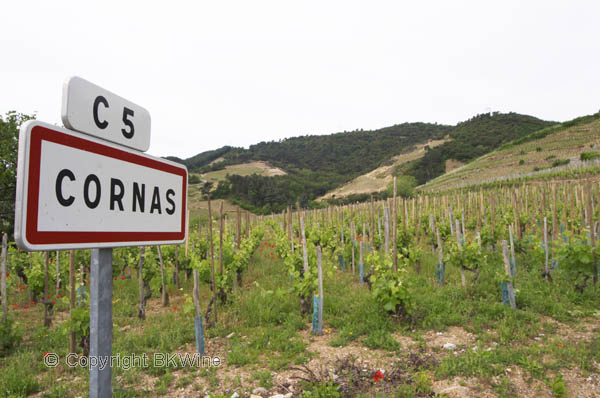
Flight 4: Domaine de Thalabert, Crozes-Hermitage
The fourth flight was anticipated with great interest since it involved a vertical tasting of the Crozes Hermitage Domaine de Thalabert. The property is known for its high fruit concentration and complexity in the wines which is not so common in Crozes Hermitage. This is the result of old vines (40-60 years) and low yields (25-30hl/ha). The soil is very stony and gravely on steep slopes.
Of the tasted vintages the 2007 and 2011 are available in Sweden.
The first wine was a Domaine de Thalabert Crozes-Hermitage 1990. It was a great vintage with perfect conditions and the wine had a fantastic aroma of ripe fruit, a lots of flavour with a nice balance between fruit and acidity and integrated tannins. Long, fine finish.
Domaine de Thalabert Crozes-Hermitage 2007 had a more difficult harvest than the 1990. The harvest period became very long in Hermitage and Crozes-Hermitage. The result is, however, very good with wines that are now beginning to open up. Pepper and dark fruit on the nose, relatively cool, but clean fruit and nice balance. Could be really good over the next few years. Is definitely good value for money.
Domaine de Thalabert Crozes-Hermitage 2010 (a warm year) had a lot of fruit on the nose, with a touch of pepper, and a high concentration of flavours. Starting to close up, but has great potential.
Domaine de Thalabert Crozes-Hermitage 2011 from a cooler year than 2010, but the August heat gave good ripeness in the fruit. Can be drunk now and is a bargain for 199 SEK (22 euro) which is actually cheaper than in France or Germany, according to Bertrand Michat!
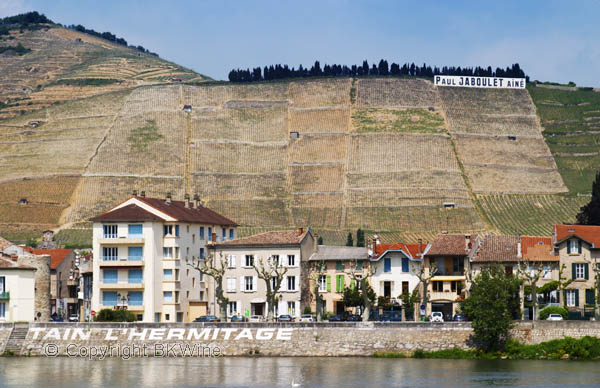
Flight 5: Hermitage
Finally, in flight five, we reached Hermitage, like Chateauneuf this is fabled area of the Rhone, which has long been known for great wines. Jaboulet is among the largest vineyard owners in Hermitage with their 14-15 ha. The four largest estates produce 80% of the wine from here.
Jaboulets estate La Chapelle is characterized by steep slopes and old vines in gravelly soil.
The first wine, Hermitage “La Petit Chapelle” 2010, is regarded as a “second wine”, but despite this, and despite the fact that the wine was still closed, it had a lot of dark fruit with hints of peppery, liquorice and charcuteries on the nose. The taste had very concentrated fruit and a long finish.
Hermitage “La Chapelle” 1994 had clear notes of maturation both in colour, aroma and flavour, as well as great complexity. A wine that is a pleasure to drink now.
Hermitage “La Chapelle” 2011, however, has its best time ahead. The year ended very hot at harvest time. The wine is young, complex, with aromas of dark berries, liquorice and some animal (charcuterie) elements. The taste was very fruity with good acidity and hints of dark fruit, peppery, and noticeable tannins. Long aftertaste.
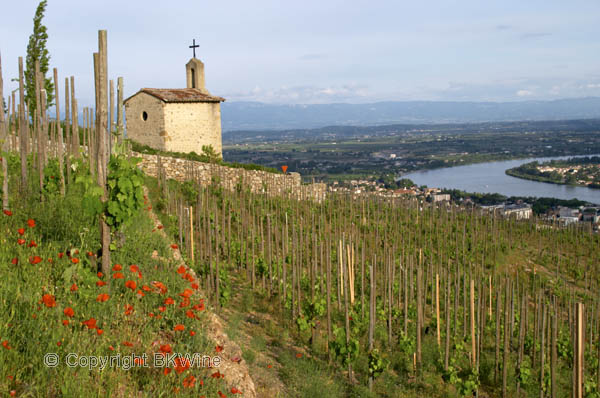
You should keep this wine preferably for many more years in the cellar, but after decanting it is enjoyable even now with the right kind of food.
In summary, the Rhone Valley is gaining ground, and the wines of Domaine Jaboulet Aîné are among those that should be reckoned with!
The tasting was arranged by Domaine Jaboulets importer in Sweden: Nigab AB.
Carl-Erik Kanne is a long time wine enthusiast and fervent wine taster. He reports from wine tastings and wine events in Stockholm for BKWine Magazine.
[box type=”info” style=”rounded” border=”full”]
The Rhone Valley has both spectacular scenery and spectacular wines. On a wine tour – with BKWine – to the Rhone Valley, you will experience the best of both Rhone wines and of the French gastronomy.
Travel to the world’s wine regions with experts on wine and specialist on wine travel!
[/box]
